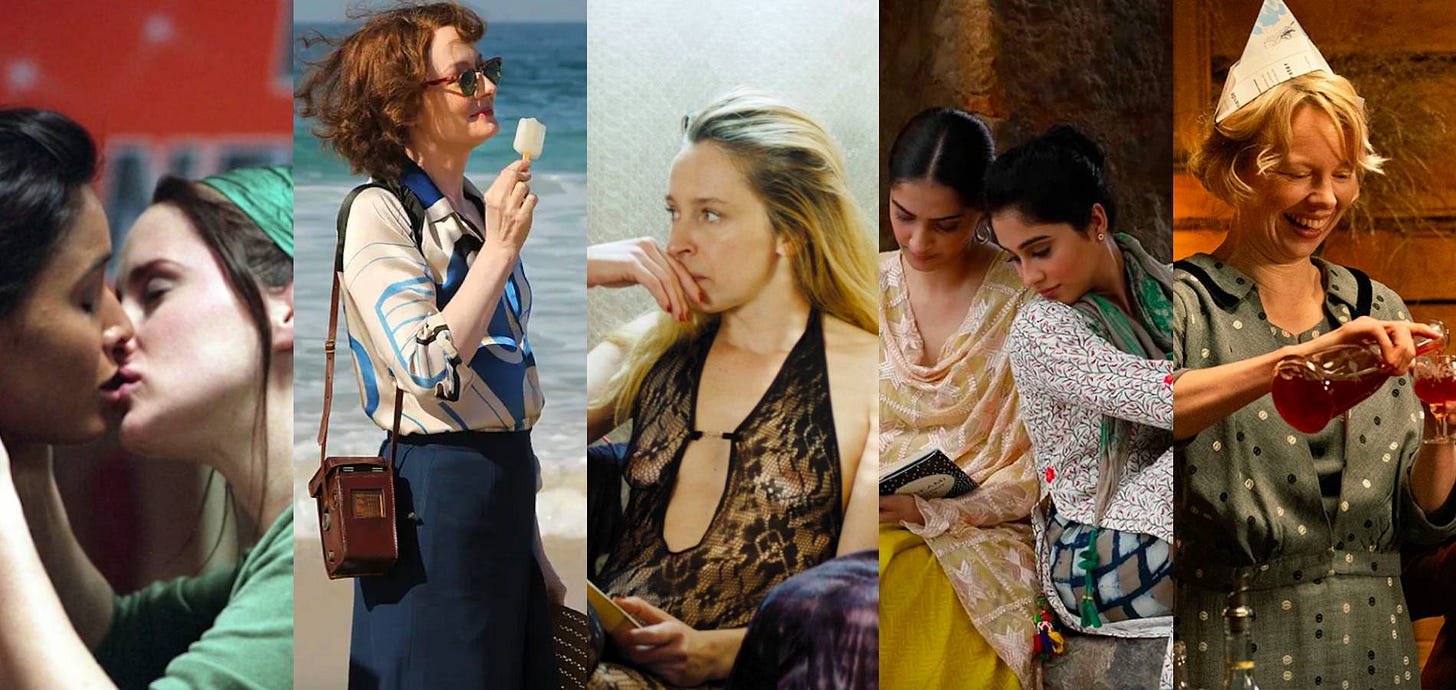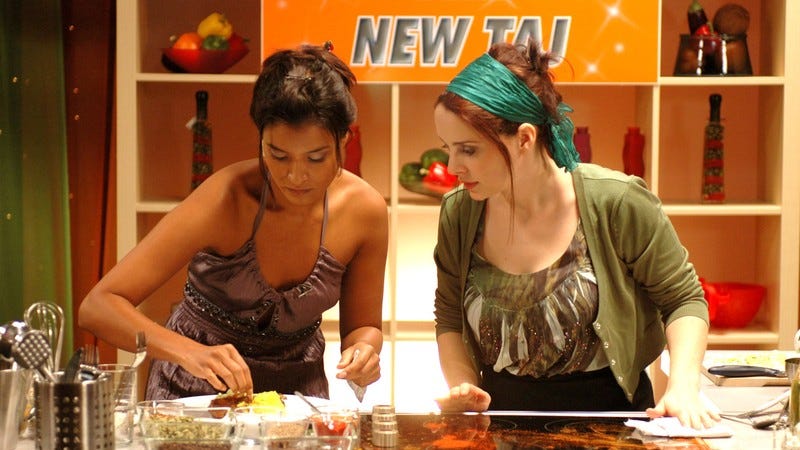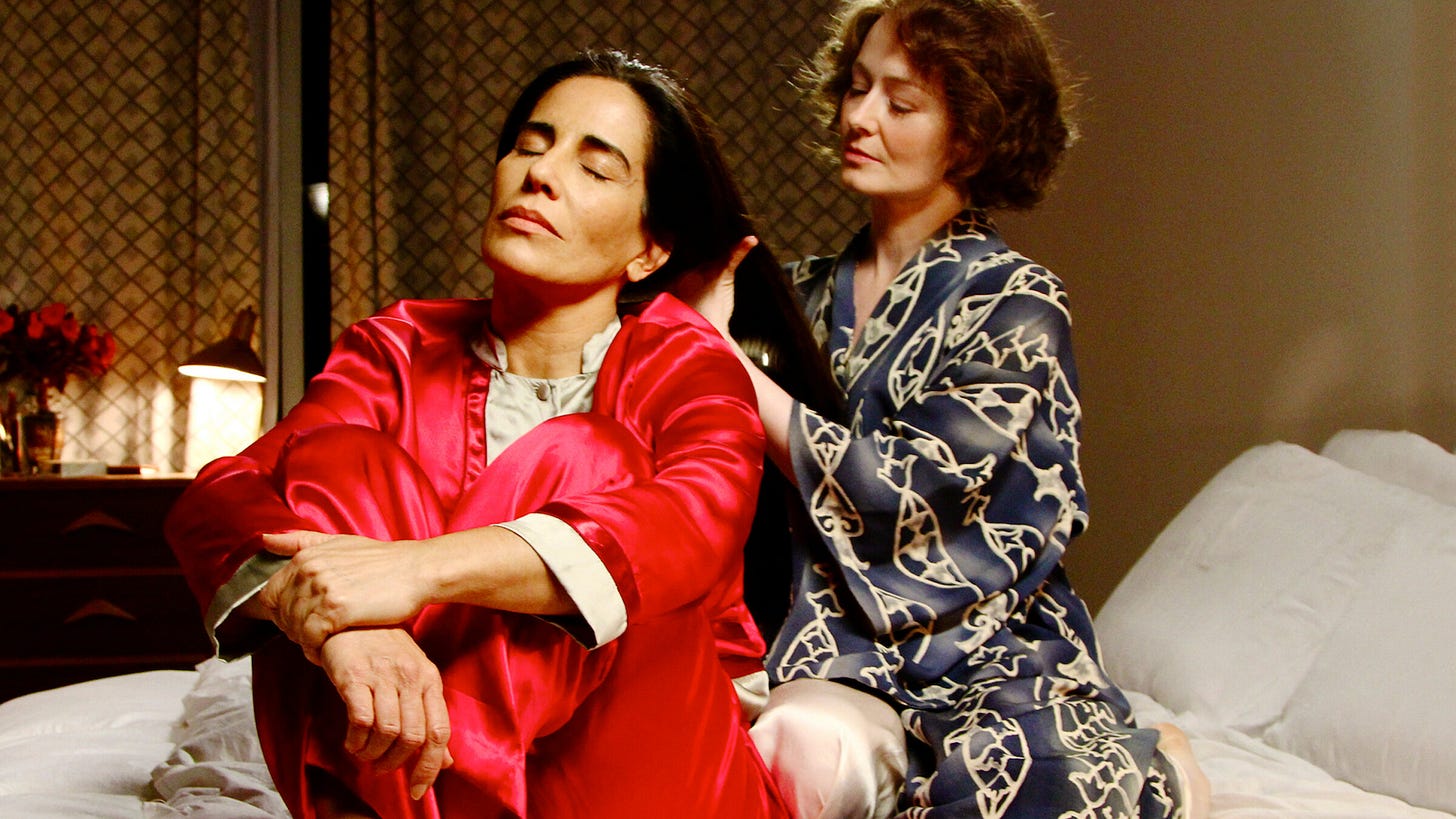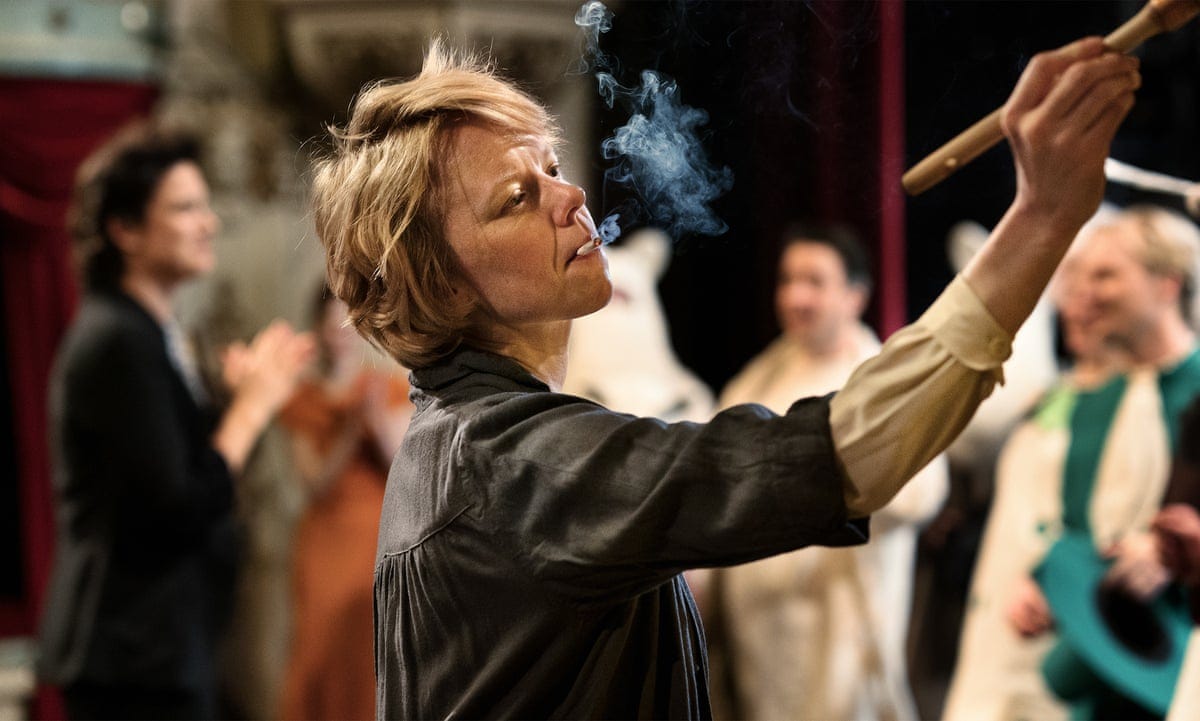5 Lesbian Films You Probably Haven't Seen (Part 2)
A few more international picks
This is the Sunday Edition of Paging Dr. Lesbian. If you like this type of thing, subscribe, and share it with your friends. Upgrade your subscription for more, including weekly dispatches from the lesbian internet, monthly playlists, and a free sticker. I’m a full-time freelance journalist – your support goes a long way!
I sometimes hear people say things like “why are all lesbian films so [blank]?” Often, the adjective they use is “sad,” but whatever the gist is, there seems to be an assumption that there isn’t much variety when it comes to lesbian cinema, and that’s just not true. There have indeed been a lot of sad lesbian period pieces in recent years, but those movies tend to represent only the most popular or well-funded lesbian films, making that belief seem truer than it is.
I’m always looking for new or old lesbian movies I haven’t seen, and I have a running list of every single one I’ve watched (and how much I liked them). Today I’m bringing you a list of five underseen lesbian films, a follow-up to a list of recommendations I made last year. I’ve done quite a few of these movie lists, and I’ll link them here: Spring, Fall, Halloween, Christmas, Countdown, Carol. (I’m in the process of creating a movie tag but haven’t finished yet.) Let me know if you watch/have watched any of these and any lesbian films you think deserve more love.
Nina’s Heavenly Delights (2006, dir. Pratibha Parmar)
The 1990s are a treasure trove of independent lesbian films, but what of the 2000s? Released in 2006, Nina’s Heavenly Delights has largely flown under the radar in the years since its release. It’s not a masterpiece by any means, but it's worth watching if you’re looking for silly, sometimes cringeworthy fun. Directed by Pratibha Parmar, best known for her feminist documentaries Alice Walker: Beauty in Truth (2014) and My Name Is Andrea (2022), the film follows Nina Shah (Shelley Conn), a cook from Glasgow who returns home for her father’s funeral.
She reconnects and begins a romance with Lisa (Laura Fraser, who you may recognize from Lip Service), an old friend who owns half of her father’s Indian restaurant. Nina’s mother and brother want to sell the restaurant, so Nina and Lisa try to save it by entering a curry competition.
The film received terrible reviews and only made $50,000 at the box office. I won’t argue that it deserves a place in the canon of the very best lesbian films (because it doesn’t), but it’s the kind of cheesy movie that can hit the spot if you’re in the right mood. While mostly fluff over substance, you can’t help but root for the curry-loving protagonists. It’s impossible not to enjoy the concept of two Scottish lesbians riding around in a van known as the “currymobile.”
Reaching For The Moon (2013, dir. Bruno Barreto)
Reaching For The Moon doesn’t exactly beat the “all lesbian films are sad period pieces” allegations, but its fascinating story and compelling performances make it worth a watch. The film dramatizes the real-life romance between American poet Elizabeth Bishop (Miranda Otto) and renowned Brazilian architect Lota de Macedo Soares (Glória Pires) in the 1950s. Elizabeth travels to Brazil to meet her friend Mary, Lota’s partner. The shy, seemingly repressed Elizabeth finds herself attracted to Lota’s fiery passion, while Lota believes she can have both women at once.
A story of opposites attract, the film details the many ups and downs of their unconventional relationship. As a warning, the film does get dark in the final third, so don’t watch if you’re in the mood for something happy-go-lucky. Nonetheless, both Otto and Pires excel in their respective roles, and this true story is painted in colorful strokes.
Ek Ladki Ko Dekha Toh Aisa Laga (2019, dir. Shelly Chopra Dhar)
Touted as the first mainstream Indian film to center on a lesbian relationship, Ek Ladki Ko Dekha Toh Aisa Laga deserves some love. The plot is something of a red herring. For the first half of the movie, we follow Sahil (Rajkummar Rao), a playwright in love with a young woman named Sweety (Sonam Kapoor). Sweety is not into Sahil, and she finally confesses why: she’s in love with another woman.
Instead of reacting negatively, Sahil is overcome with creative passion. He decides to write a play with a message of tolerance about lesbian love. He casts Sweety and her girlfriend Kuhu (Regina Cassandra) to play the lead roles. Sweety is most concerned about her family’s reaction, particularly her father (played by Anil Kapoor, Sonam’s father in real life). If you’re looking for a full-blown romance, this film doesn’t deliver that. Indeed, the relationship between Sweety and Kuhu is explored very little. Still, it’s such a kindhearted, optimistic film that one can’t help but be charmed by it.
The film’s significance grows when you consider its context within Indian cinema. The most famous example of lesbians in Indian film is Deepa Mehta’s 1996 Indo-Canadian film Fire, which set off protests, including the burning of theaters, when it played in India two years later. 2008’s Dostana, seemingly about gay men, is actually a fake-out, as both men are only pretending to be gay. In 2016, there was Kapoor & Sons, though the gay son was given very little space to speak of or live out his queerness. Since Ek Ladki Ko Dekha Toh Aisa Laga, we’ve seen the release of Badhaai Do, which is often too silly to believe, and Maja Ma, in which Madhuri Dixit plays a closeted housewife treated horribly by her friends and family. Ek Ladki Ko Dekha Toh Aisa Laga stands out as a film that feels kind and hopeful, even if the plot lacks any truly subversive elements.
Bliss (2021, dir. Henrika Kull)
In the 2021 German film Bliss, we’re offered a lesbian love story with no frills. Katharina Behrens plays Sascha, a forty-something sex worker living a humdrum life. In comes Italian twenty-something Maria (Adam Hoya), whose arrival at the brothel (filmed in a real-life legal brothel in Berlin) shakes things up for Sascha. The two women begin a passionate love affair that’s only sometimes tempered by their personal baggage.
Bliss is often a messy film, and that’s mostly the point. It aims for verisimilitude at all times, which for some could mean it lacks the appropriate cinematic varnish. But the film’s rawness is part of its charm, and its general plotlessness acts in service of this ideal. Though it follows two sex workers, the film doesn’t intend to teach the viewer any lessons about that industry. As in all love stories, the circumstances of both their lives affect their relationship, and those ups and downs are presented plainly by filmmaker Henrika Kull.
Tove (2021, dir. Zaida Bergroth)
Biopics can sometimes be formulaic and simplistic, especially in recent years. But the film Tove, which tells the story of Moomins creator Tove Jansson, resists formula and instead strikes at the heart of the matter: how Tove really felt about her life and the people around her.
When we first meet Tove (Alma Pöysti), she’s a struggling painter having an affair with a married politician. Later, she meets wealthy theatre director Vivica (Krista Kosonen), with whom she falls in love. It’s Vivicia who sees the potential in Tove’s drawings, once dismissed as “scrawls” by her imperious father. Together, they create a play based on the characters that would go on to be a worldwide phenomenon.
Tove is a fascinating character – at once insecure and wildly out-of-the-box – played brilliantly by Pöysti. The film shows us how little Tove believed in her Moomins, and how they became popular despite her many misgivings. Much of the film focuses on Tove’s relationships (which during this era, were mostly with women), from her alluring rich girlfriend to the woman she would spend the rest of her life with. It’s a joyful, unique film about a woman whose personal life was filled with more passion than her art might indicate.










ive recently watched “fire” from 1996 directed by deepa mehta! Its not perfect but it was solid and the actors are great, i definitely recommend it if youre looking for more diverse wlw films (: